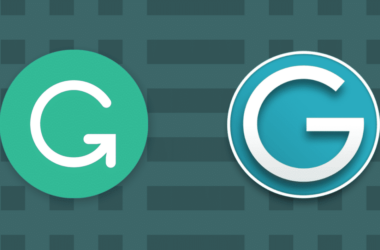It can be challenging to sort through the different types of putters varieties in golf. There are so many options to pick from.
Undoubtedly, putting is part of the game that creates the most anxiety for average golfers.
Many golf careers have ended abruptly after yet another three-putt, and few sports can match the frustration of putting.
Furthermore, the putter is the most often used club in your bag. And in almost every professional competition, the player who puts the best wins.
This article will discuss the different types of putters and what distinguishes each type.
1. Face Balanced Putters
Face Balanced putters feature a face that faces upwards when the shaft is balanced on your finger. This means that the center of gravity is immediately beneath the shaft’s axis.
Face-balanced putters are advised for players with straight putting stroke because they open less on the backswing and close less on the follow-through.
2. Toe Balanced Putters
Face-balanced putters have a different center of gravity dynamic than toe-balanced putters, often known as “toe-hangs.”. The toe of the putter will sink and point downwards when balanced horizontally across your fingers.
These putters’ center of gravity is always off the bottom of the shaft axis. They are ideal for golfers with an arc in their stroke because the balance allows the club to open up on backswings and close off on follow-throughs.
3. Blade Putters
The blade putter is the oldest and most conventional style of putter. Its traditional shape, which uses a small head, was trendy in golf from 1900 to 1990. And is still used by golfers today.
In the early days of golf club manufacturing, the simple, flat look was easy to achieve, and the soft hit a blade produced appealed to various greens.
Furthermore, Blade putters are face-balanced, which will fit a golfer with a straight putting stroke. They are traditionally suited to more challenging, faster greens that require a more delicate touch.
4. Peripheral Weighted Putters
The blade putter’s logical evolution was the peripheral or heel-toe weighted putter. This is one of the different types of putters.
Long and thin at the toe, the design might still be soft and delicate, but the technique could be more consistent and forgiving with additional weight added to the heel and toe regions.
This putter shape was made famous by the Ping Anser design of 1966. Revolutionized the game and is still used by many of the world’s best players.
Furthermore, the hosel’s length and style are traditionally toe-balanced, but they can be changed to fit practically any stroke type.
5. Mallet Putters
Like how large heads in drivers made tee strokes more consistent and forgiving, the mallet-shaped putter did the same on the green.
With more space, manufacturers frequently use various alignment aids and shapes on the back of the head to assist players in better aligning to putts.
The deep design of the putter’s head allows manufacturers to have a lower and deeper center of gravity and increase the Moment of Inertia (MOI), which reduces spins and improves performance on off-center putts.
Therefore, mallet putters are usually face-balanced and suited to straight strokes.
6. Metal Faced Putters
Steel is the most common material for a putter’s face. Bronze, aluminum, brass, copper, zinc, and titanium are examples of other metals that have been utilized in the past and are still used now.
Metal’s solid and hefty composition is ideal for putter faces. Steel putters are known for their firm yet responsive striking, giving them a solid, controlled feel.
A metal-faced putter has the advantage of producing a louder sound. You can immediately hear the type of connection you made on the ball.
Allowing you to feel and hear where your putter’s center is. Milling on the face of some metal-faced putters makes them feel and sound softer.
Since less material is in contact with the ball, however, a rough look may seem strange, yet it helps performance, even though they feel it isn’t as soft as an insert putter.
7. Insert Faced Putters
Insert putters are metal putters with a lightweight non-metal insert in place of the metal face.
The most significant benefit of employing a light insert is the putter’s weight, which may be transferred and added to the heel and toe, boosting MOI and providing more forgiveness.
Many people say that the disadvantage of these soft inserts is that they don’t make the same sound as a metal face.
Although some current inserts are designed to emulate steel’s metallic sound and feel in a lighter-weight insert, most insert faces promote a softer feel than conventional steel.
Inserts allow you to play with a more brutal cover ball while maintaining the same level of feeling as a softer ball with a metal face.
8. Groove Faced Putters
The emergence of grooves on the face of a putter is a new phenomenon. This is one of the different types of putters. Although this may be the last thing you desire, there is a reason.
A putter’s impact on the golf ball on any putt on any green frequently results in skidding, sliding, back spinning, and even hopping before the ball begins rolling on the green.
These influences are the primary reasons for missed putts, even when struck on the correct line. As a result, the key to more precise putting is to achieve forward rolling motion as soon as the ball is hit.
Furthermore, A putter’s grooves can assist in achieving this forward motion and keeping the ball on the line. When the golf ball hits the grooves, they grip its surface, lifting it from its resting position and imparting an over-the-top rolling action.
In addition, to add to the confusion, Grooved putters are typically metal-faced, but some insert putters now include grooves. Like all putters, trial and error is the only way to determine what works best for you.
10. Center-shafted Putters
Center-shafted putters connect similarly to center-shafted putters, but they meet the putter in the lengthwise center of the head.
This is one of the different types of putters. Choosing a putter with a center-shafted shaft is primarily a matter of personal preference.
This is one of the different types of putters. All golfers pay great attention to the putter’s hosel. Although some want the hosel to be in the center to guide the ball towards the hole, others prefer heel-shafted putters that allow them to show the putt with the putter head.
11. Belly Putters
The advent of belly-length putters has undoubtedly become the latest golf rage. By establishing a third point of contact, belly putters help to stabilize the putt.
The three points are the two hands and the belly. The putter can be fixed against the body, allowing the golfer’s stance to remain unchanged.
12. Long Putters
The long or ‘broom handle’ putter is the least popular. This is one of the different types of putters. These putters differ from the belly putter in that they rest above the belly button, the chest, or even the chin.
They require a complete grip change from belly putters and classic putters, both of which can be used with the standard putting grip.
Furthermore, Most players hold the putter in their left hand (thumb up) and use their right hand as a claw in the middle area of the putter to draw and push through the path of the putt, similar to a pendulum.






